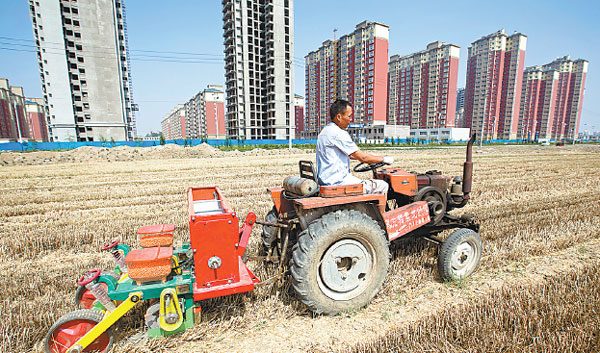
New buildings in Huaxian county, Henan province. Urbanization will play an active role in keeping the country's investment and rowth stable. Wang Zirui / For China Daily
According to the latest official data, the number of new urban zones constructed and planned by local governments exceeded 3,500 by the end of May. That is almost two for each county.
But these new urban zones overly rely on real estate developments, which, having failed to attract any residents, have become "ghost towns".
Thus local governments find themselves increasingly tormented by the question: How do we populate the new zones?
That question is rather challenging because the infrastructure for many, if not most, of the new urban zones has been constructed using loans from State-owned banks.
Most leading local officials have put their hope on attracting rural residents to these new areas; some even ask their subordinates to "recruit" rural residents.
The problem is that the pace of rural residents migrating to cities is not fast enough, but local governments have planned and constructed so many new zones. As the official data show, the land for urban construction during the 12th Five-Year Plan period (2011-15) increased by 20 percent, while the urban population grew by 11 percent.
The core of urbanization is to develop industries and the service sector, so as to provide jobs to attract people to the cities to live. Without the lure of jobs, the new urban zones, no matter how well they are designed, will not attract new residents because people will not be able to make a living in them.
Worse, some cities are still planning new zones because leading local officials believe they can easily boost their "achievements" in this way and so gain promotion. This will only produce more bubbles in the realty market.
In order to reverse this trend, it is also necessary to alter the old GDP-oriented performance evaluation for officials so that they do something with real meaning.


















































